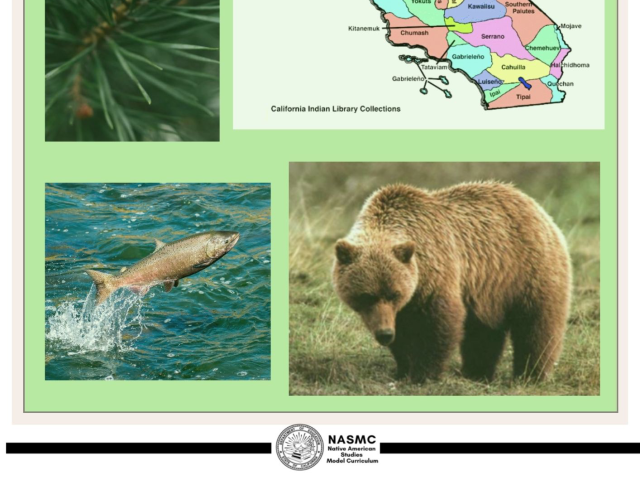Connected California: Preservation and TEK (Yurok) Unit

Introduction:
The Connected California: Preservation and TEK (Yurok) Unit is an interdisciplinary environmental education unit designed for grades 3–5 that centers Yurok Tribal knowledge and stewardship practices within the study of science, social studies, and environmental conservation. Developed by the California Indian Museum and Cultural Center, California Indian Education for All, and the San Diego County Office of Education featuring video content from the California Academy of Sciences, this unit highlights the integration of Traditional Ecological Knowledge (TEK) and modern science in sustaining ecosystems, cultural lifeways, and biodiversity.
Through four engaging, video-driven lessons, students explore the cultural and ecological importance of the California condor, sea stars, salmon, and Cache Creek. They investigate life cycles, environmental threats, and the ways the Yurok Tribe actively works to protect and restore these natural systems. Core themes include environmental relationships, cultural strengths, sovereignty, and Indigenous knowledge systems, all supported by the 5E instructional model: Engage, Explore, Explain, Elaborate, Evaluate.
Students engage in hands-on learning, reflection, collaborative projects, and advocacy-based activities, all grounded in the values of respect, reciprocity, and reverence. By the end of the unit, students will have deepened their understanding of the reciprocal relationships between people and place, the importance of cultural knowledge in conservation, and their own roles as stewards of the environment. Each lesson integrates video storytelling, scientific inquiry, Indigenous perspectives, and student-led advocacy, helping learners build deep connections between culture, place, and ecological responsibility.
Core Themes:
History and sovereignty
Cultural strengths and Indigenous knowledge systems
Environmental relationships and stewardship
Science, civics, and ELA integration
Students will:
Analyze environmental impact on Indigenous communities and ecosystems.
Identify ways communities can sustainably interact with coastal ecosystems.
Analyze the impact of restoration efforts on preserving history and supporting ecosystems.
Understand the characteristics and importance of desert ecosystems.
Explore Indigenous cultural perspectives and the environment.
Evaluate solutions for balancing conservation and human needs.
Express learning through art, reflection, and collaborative discussion.
